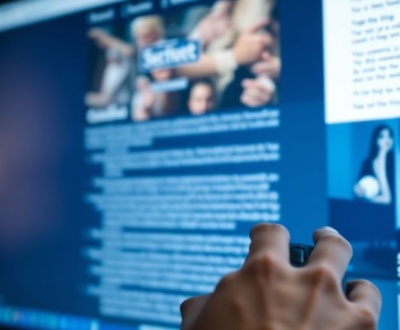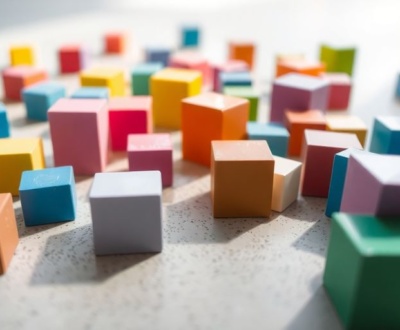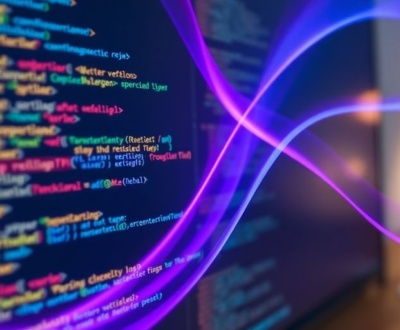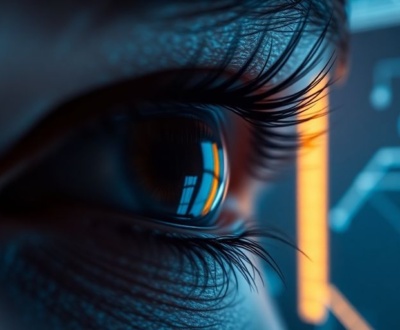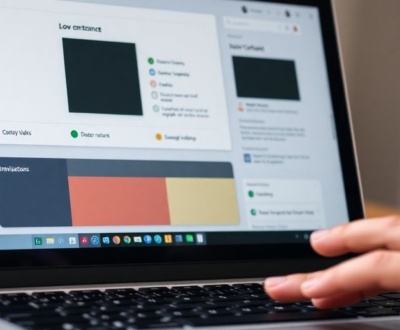Remember when digital stuff looked like real-world items? Like a notes app that looked like a yellow legal pad, or a calculator that looked like, well, a calculator? That was skeuomorphic design, and it was everywhere. Then came the super-flat, minimalist look, and suddenly, all that realistic stuff felt old-fashioned. But guess what? Things are changing again. In 2025, we’re seeing a “skeuomorphic design revival,” and it’s not just about going back in time. It’s about making digital experiences feel more real, more fun, and easier to use, but in a fresh, new way.
Key Takeaways
- The “skeuomorphic design revival” is happening because people want digital things to feel less generic and more personal.
- Skeuomorphism helps make apps easy to understand by using familiar real-world cues.
- New tech makes it possible to have cool, realistic designs without making things slow.
- Using skeuomorphic elements can make apps feel more fun and unique.
- The new skeuomorphism is about subtle touches, not making everything look exactly like a physical object.
The Skeuomorphic Design Revival: A New Era of Digital Tactility

Remember when every app tried to look like something real? Leather-stitched calendars, brushed metal music players… that was skeuomorphism. It was everywhere, then it vanished. Now, it’s coming back, and it’s not just nostalgia. It’s about making our digital world feel, well, a little less digital.
From Flat Minimalism to Richer Interfaces
For years, flat design reigned supreme. Everything was clean, simple, and, let’s be honest, a bit boring. Now, people are craving something more. We’re seeing a shift towards interfaces that offer more visual depth and a sense of tangibility. Think soft shadows, subtle textures, and designs that hint at the physical world. It’s a move away from the sterile and towards the stimulating.
Why Digital Homogeneity Fuels the Skeuomorphic Design Revival
Ever notice how many apps look the same these days? It’s hard to tell one from another. Skeuomorphism offers a way to break free from this digital homogeneity. By incorporating familiar textures and visual cues, designers can create interfaces that are not only more intuitive but also more memorable and brand-distinctive. It’s about injecting personality back into our screens.
The Craving for Digital Texture and Playful Realism
We don’t need skeuomorphism to tell us how to use an app anymore. We’ve all been swiping and tapping for years. The revival isn’t about function; it’s about feel. People want interfaces that are fun, engaging, and maybe even a little bit whimsical. It’s about adding a layer of playfulness to our digital interactions.
Skeuomorphism’s return isn’t just a design trend; it’s a response to the increasingly sterile and homogenous nature of our digital world. It’s a way to make technology feel more human, more engaging, and more fun.
Understanding the Core of Skeuomorphic Design
Mimicking Reality for Intuitive Interaction
Skeuomorphism, at its heart, is about making the digital world feel more familiar. It’s a design approach where digital elements are made to resemble their real-world counterparts. Think of a calendar app that looks like a physical day planner, complete with faux leather and page-turning animations. The idea is that by using these familiar visual cues, users can quickly understand how to interact with the interface. It’s about leveraging existing knowledge to make new technology more approachable. This is especially helpful for people who might not be as comfortable with digital interfaces. The goal is to reduce the learning curve and make the experience more intuitive. Skeuomorphism in UX design achieves this by mirroring real-world objects.
The Historical Context: iOS 6 and Beyond
Skeuomorphism had its heyday in the early days of smartphones, particularly with iOS 6. Remember the Notes app that looked like a yellow legal pad? Or the Game Center with its felt-covered table? These designs were everywhere, and they were a deliberate choice. Apple, among others, wanted to make the transition to digital devices easier for everyone. But then came flat design, and skeuomorphism was largely abandoned. People started to see it as clunky and outdated. Now, it’s making a comeback, but with a more refined approach. It’s not about recreating every detail; it’s about using subtle cues to create a sense of familiarity. It’s interesting how design trends cycle back around, isn’t it?
Bridging the Physical and Digital Realms
Skeuomorphism is more than just aesthetics; it’s about creating a connection between the physical and digital worlds. It’s about making technology feel more tangible and less abstract. This is especially important in immersive experiences like AR and VR, where the line between the real and virtual is blurred. By using familiar visual metaphors, skeuomorphism can help users feel more grounded and comfortable in these new environments. It’s about using the familiar to explain the unfamiliar. This is key to successful user adoption.
Skeuomorphism uses the familiar to explain the unfamiliar in a straightforward way. It enhances usability without overwhelming the user. Rather than directly copying physical textures and elements, modern skeuomorphism often adds nuanced interactions to otherwise minimal designs and, in a way, marries flat design and skeuomorphism.
Here are some ways skeuomorphism bridges the gap:
- Mimicking physical controls in software interfaces.
- Using textures and materials that resemble real-world objects.
- Creating animations that simulate physical actions.
Key Drivers Behind the Skeuomorphic Design Revival in 2025

Nostalgia and Emotional Connection in UX
It’s interesting how design trends cycle back around, isn’t it? Skeuomorphism is no exception. A big reason for its comeback is good old nostalgia. People are drawn to the familiar, and skeuomorphic designs tap into that feeling by mimicking real-world objects. Think about it: a notes app that looks like a real notepad, or a calendar that resembles a paper planner. These designs can create a sense of comfort and ease, especially for users who might not be super tech-savvy. It’s like a warm blanket in the cold, digital world.
Technological Advancements Enabling Richer Designs
Remember when skeuomorphism was clunky and slowed everything down? Well, those days are long gone. Technology has come a long way, and now we have the power to create incredibly detailed and realistic designs without sacrificing performance. High-resolution displays, faster processors, and ample storage mean designers can go all-out with textures, shadows, and other visual effects. It’s like giving an artist a bigger canvas and a better set of tools.
Craft Over Generics in the AI Era
In a world increasingly dominated by AI-generated content, there’s a growing desire for things that feel authentic and handcrafted. Skeuomorphism offers a way to stand out from the crowd by adding a touch of personality and uniqueness to digital interfaces. It’s a reaction against the sterile, generic designs that are becoming so common. People want to see the human touch, and skeuomorphism can provide that. It’s like choosing a handmade piece of furniture over something mass-produced in a factory.
Skeuomorphism’s return isn’t just about aesthetics; it’s about creating a more human and engaging digital experience. It’s about tapping into our emotions, leveraging technological advancements, and celebrating the value of craft in an increasingly automated world.
Benefits of Embracing Skeuomorphic Design Principles
Reducing Cognitive Friction for Users
Skeuomorphism shines by using familiar visual cues, which can really cut down on cognitive friction. It lets users draw on what they already know, making digital interactions feel more natural. Think about it: if a button looks like a real-world button, you instantly know you can press it. This is especially helpful for people who aren’t super tech-savvy. It’s all about making things intuitive.
Enhancing Visual Richness and Personality
Let’s be honest, flat design can sometimes feel a bit sterile. Skeuomorphism brings back some much-needed visual richness and personality. It adds depth, texture, and a touch of playfulness to interfaces. This can make a big difference in how users perceive a brand. It’s like adding a bit of soul to the digital world. The visual design landscape is changing, and skeuomorphism is a big part of it.
Optimizing for Immersive Experiences Like AR/VR
Skeuomorphism is a game-changer for augmented reality (AR) and virtual reality (VR). In these immersive environments, bridging the gap between the physical and virtual worlds is key. User interfaces that mimic real-world objects, like virtual buttons that look and feel like actual buttons, can help users understand how to interact with these spaces more intuitively. It’s about making the virtual feel tangible.
Skeuomorphism isn’t just about making things look pretty; it’s about making them feel familiar and understandable. It’s a way to ground users in a digital world that can sometimes feel overwhelming.
Strategic Application of Skeuomorphic Design in Modern UX
Balancing Realism with Modern Aesthetics
It’s all about finding the sweet spot. You don’t want your interface to look like a museum piece, but you also don’t want it to be so sterile that it lacks personality. The key is to use skeuomorphic elements sparingly and thoughtfully, blending them with modern design principles like clean lines and ample white space. Think subtle textures, soft shadows, and realistic icons that hint at functionality without being overly literal. It’s a dance between the old and the new, creating a user experience that feels both familiar and fresh. The goal is to enhance usability without overwhelming the user. Modern skeuomorphism often adds nuanced interactions to otherwise minimal designs, marrying flat design and skeuomorphism.
Prioritizing Affordance and Emotional Resonance
Skeuomorphism shines when it makes interactions more intuitive. Affordance is key – the design should clearly communicate how an element is meant to be used. A button that looks like a button should act like a button. But beyond mere functionality, skeuomorphism can also tap into our emotions. By mimicking real-world objects, it can evoke feelings of nostalgia, comfort, and familiarity. This emotional connection can make the user experience more engaging and memorable. It uses the familiar to explain the unfamiliar in a straightforward way.
Maintaining Consistency Across Digital Platforms
Consistency is king, especially when it comes to UX. If you’re using skeuomorphic elements in one part of your app or website, make sure they’re consistent throughout. This helps to create a cohesive and predictable user experience. It’s also important to consider how your skeuomorphic designs will translate across different devices and screen sizes. What looks great on a desktop might not work as well on a mobile phone. Adaptability is crucial for a consistent user experience.
Think of skeuomorphism as a seasoning, not the main course. A dash of realism can add flavor to your design, but too much can spoil the dish. The best approach is to experiment, iterate, and always put the user first.
Where Skeuomorphic Design Shines Brightest
Skeuomorphism isn’t just a design fad; it’s a tool that, when used correctly, can significantly improve user experience. It’s about finding the right context where mimicking real-world objects makes digital interactions more intuitive and enjoyable. Let’s look at some areas where skeuomorphic design really stands out.
Mobile Applications and Their Tactile Feedback
Mobile apps are a natural fit for skeuomorphism because they often try to replicate real-world tools or experiences. Think about a notes app that looks like a notepad, or a calendar app that resembles a physical planner. The key is to provide tactile feedback that mimics the physical world, making interactions feel more natural. This can be as simple as a satisfying ‘click’ sound when you press a button or a subtle animation that imitates the movement of a physical object. This is especially helpful for older users or those less familiar with technology, as it leverages existing knowledge to explain the unfamiliar.
Music Production Software and Virtual Controls
Music production software is another area where skeuomorphism excels. Virtual knobs, faders, and dials that look and behave like their physical counterparts can make complex digital interfaces more accessible. It’s not just about aesthetics; it’s about providing a visual and tactile experience that mirrors the feel of using real studio equipment. This can help musicians and producers feel more comfortable and confident when using the software, leading to a more creative and productive workflow. It’s about making complex digital interactions more accessible by replicating physical studio equipment.
Gaming Interfaces and Enhanced Immersion
In gaming, skeuomorphism can be used to create more immersive and engaging experiences. Think about a game where you’re interacting with a virtual cockpit, or a puzzle game where you’re manipulating physical objects. By mimicking the look and feel of real-world objects, skeuomorphism can help players feel more connected to the game world. This can be especially effective in VR and AR games, where the goal is to create a sense of presence and realism. Enhanced immersion is the goal here.
Skeuomorphism’s strength lies in its ability to bridge the gap between the physical and digital worlds. By leveraging familiar visual metaphors, it can make digital interfaces more intuitive, engaging, and enjoyable to use. It’s not about blindly copying real-world objects, but about carefully selecting elements that enhance usability and create a more natural user experience.
Here are some examples of where skeuomorphism can be effective:
- Calculator Apps: Replicating the layout and buttons of a physical calculator.
- E-Readers: Simulating the experience of flipping through the pages of a book.
- Voice Recording Apps: Using a microphone icon that looks like a real microphone.
The Evolution of Skeuomorphism: Skeuomorphic Design 2.0
Skeuomorphism isn’t dead; it’s just evolving. We’re seeing a move away from the hyper-realistic designs of the past toward something more subtle and nuanced. Think of it as Skeuomorphism 2.0 – a smarter, more refined approach that understands the importance of blending the familiar with modern aesthetics. It’s about hinting at reality, not replicating it exactly.
Subtle Cues: Soft Shadows and Gradients
Instead of harsh, obvious shadows and textures, Skeuomorphism 2.0 uses soft shadows and gradients to imply depth and dimension. This creates a more pleasing visual experience that doesn’t feel dated or clunky. It’s about adding a touch of realism without overwhelming the user interface. It’s a delicate balance, but when done right, it can make a huge difference. Think of the way light interacts with surfaces in the real world and try to mimic that in a subtle way. This approach helps to create familiarity without sacrificing a clean, modern look.
Icons with Purposeful Realism
Icons are getting a makeover. Forget the overly detailed, photorealistic icons of the past. The new trend is icons that have just enough realism to be instantly recognizable but not so much that they become distracting. It’s about finding that sweet spot where the icon clearly communicates its function without feeling like a relic from the early 2000s. Think about the core essence of the object the icon represents and focus on conveying that in a simple, elegant way.
Physicality in Interactions Without Over-Stylization
We’re seeing more and more interfaces incorporate physical interactions, like pull-to-refresh gestures or buttons that appear to depress when tapped. However, the key is to do this without going overboard on the visual styling. It’s about making the interaction feel natural and intuitive without relying on heavy-handed skeuomorphic elements. The goal is to enhance the user experience, not distract from it. Here are some examples:
- Subtle animations that mimic real-world physics.
- Haptic feedback that provides a tactile sensation.
- Visual cues that indicate how an element can be interacted with.
Skeuomorphism 2.0 is all about finding the right balance between realism and abstraction. It’s about using familiar cues to guide users and create a more engaging and intuitive experience, without sacrificing the clean, modern aesthetic that we’ve come to expect from digital interfaces.
Conclusion: Skeuo’s Not Just Back—It’s Evolving
So, the return of skeuomorphism isn’t about going backward. It’s more about finding a good mix of clear design, feeling, and how easy something is to use. Look at what Airbnb and Apple’s VisionOS are doing. When it’s done right, skeuomorphism isn’t some old-fashioned thing. It’s a strong way to help people through more involved and emotional digital experiences. Flat design made things look neat and clean. Now, skeuomorphism is helping them feel human again.
Frequently Asked Questions
What exactly is skeuomorphic design?
Skeuomorphic design is a style where digital items look like real-world things. Think of an app icon that looks like a real trash can, or a button that looks like a physical switch. It helps make new digital tools feel familiar and easy to use.
When was skeuomorphic design popular before?
It was very popular in the early days of smartphones, especially with older iPhones. Apps like the calendar or notes used to look like real paper calendars or notebooks. This helped people get used to using digital devices.
Why did skeuomorphic design go out of style?
It became less popular because designers wanted simpler, cleaner looks. They felt that making digital things look too much like real things was old-fashioned and messy. This led to ‘flat design,’ which is very simple and minimal.
Why is it making a comeback now?
It’s coming back because people are getting tired of everything looking the same. Skeuomorphism adds personality and a fun, tactile feel. It’s not just about making things easy to understand anymore; it’s about making them feel good to use and unique.
How is modern skeuomorphic design different from before?
Today, it’s not about making things exactly like real life. Instead, it uses subtle hints like soft shadows, gentle colors, and textures to give a feeling of depth and reality without being too busy. It’s a modern, refined version.
Where can modern skeuomorphic design be used effectively?
It works best when you want to make a digital experience feel more real and engaging. This is great for things like music apps with virtual buttons, games that feel more immersive, or even in new technologies like virtual reality where you want things to feel touchable.
About this blog
We are a digital marketing company with a focus on helping our customers achieve great results across several key areas.
Request a free quote
We offer professional SEO services that help websites increase their organic search score drastically in order to compete for the highest rankings even when it comes to highly competitive keywords.


